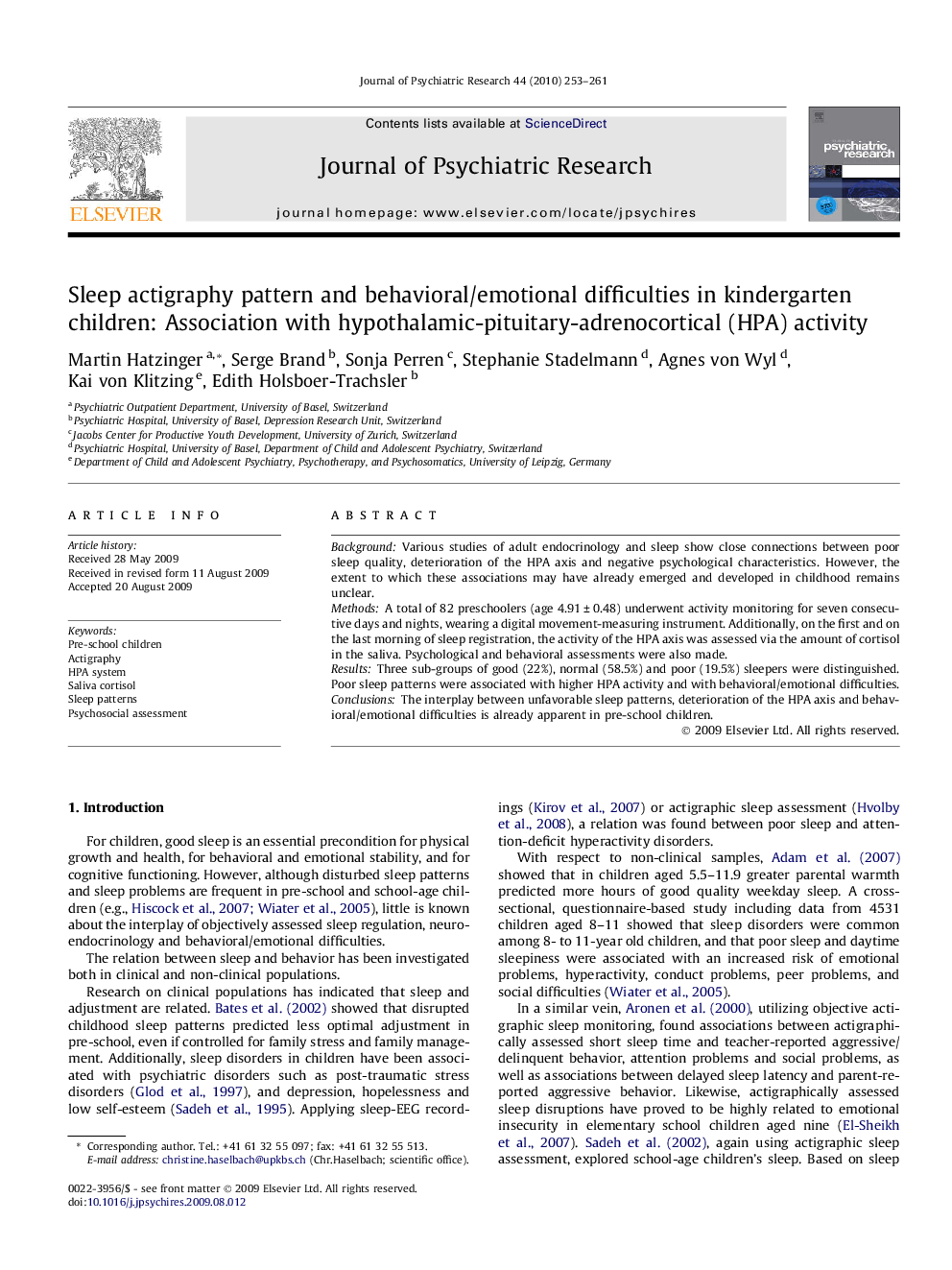| Article ID | Journal | Published Year | Pages | File Type |
|---|---|---|---|---|
| 327806 | Journal of Psychiatric Research | 2010 | 9 Pages |
BackgroundVarious studies of adult endocrinology and sleep show close connections between poor sleep quality, deterioration of the HPA axis and negative psychological characteristics. However, the extent to which these associations may have already emerged and developed in childhood remains unclear.MethodsA total of 82 preschoolers (age 4.91 ± 0.48) underwent activity monitoring for seven consecutive days and nights, wearing a digital movement-measuring instrument. Additionally, on the first and on the last morning of sleep registration, the activity of the HPA axis was assessed via the amount of cortisol in the saliva. Psychological and behavioral assessments were also made.ResultsThree sub-groups of good (22%), normal (58.5%) and poor (19.5%) sleepers were distinguished. Poor sleep patterns were associated with higher HPA activity and with behavioral/emotional difficulties.ConclusionsThe interplay between unfavorable sleep patterns, deterioration of the HPA axis and behavioral/emotional difficulties is already apparent in pre-school children.
